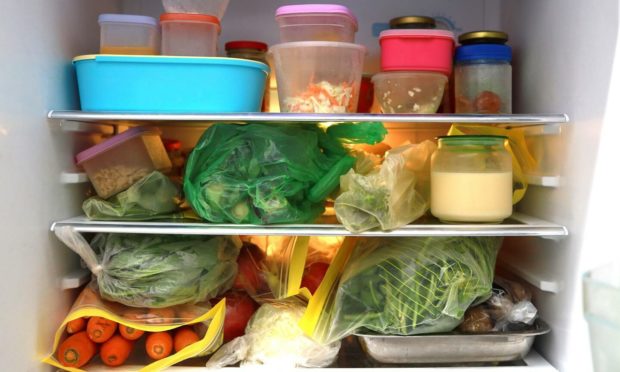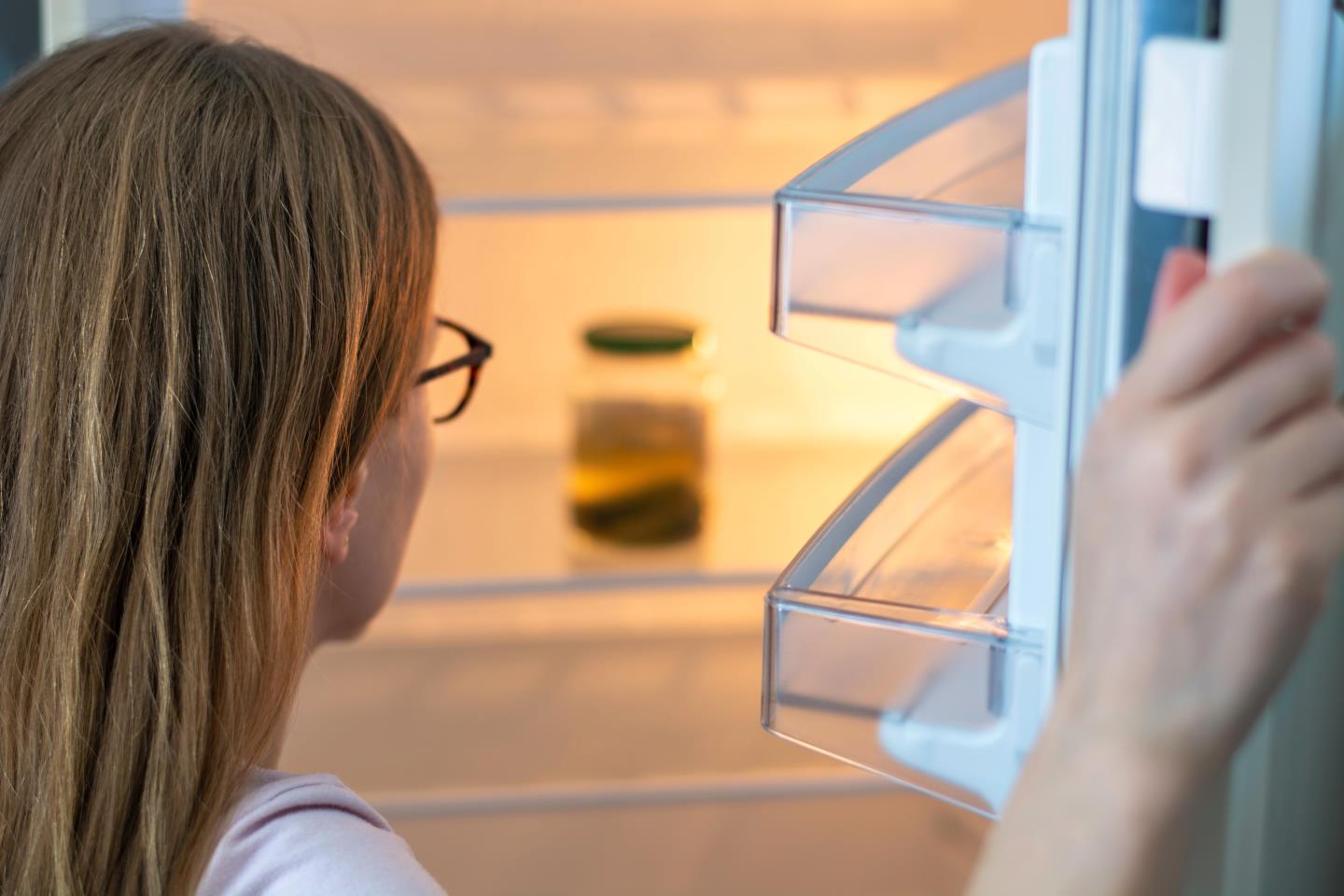As teens head off to college and uni, Catherine Devaney has some tips to help them discover the delights of conjuring up meals
As September waxes and wanes there’s a familiar sense of change in the air marked by the return of the students to campuses across the country. Just how it feels as a parent to pack off these impossibly fresh-faced young things I can’t begin to imagine.
The very thought that in 10 lightning short years my own might be jamming all their worldly goods into the back of the car and venturing forth in search of cheap tequila and intellectual advancement is enough to make me weep.
Will I be the kind of mother who paces the floors, nervously awaiting a phone call and rushing through at the first opportunity to whisk them out for feeding up and
re-stocking the fridge?
Or will I, by then, be so entranced by the peace that I will dance around the kitchen chanting “they’ve gone, they’ve gone, they’ve gone!”? It’s hard to tell.
When I left for university in 1998 I was given a book entitled “Grub on a Grant” by Cas Clarke, although by then grants were long obsolete and tuition fees were the order of the day. It promised “cheap and foolproof recipes for all students”. A quick flick suggests it was never put to much use.
There’s a distinct 1980s streak running through it, full of interesting confections such as “Egg Curry”, “Cheese and Lentil Pudding”, “Fish Fingers and Onion Sauce” and, my personal favourite, “Tipsy Fruit Salad”. Often tipsy but seldom in the vicinity of any kind of salad would be a more apt description of my student years.
Curious as to what other contemporary guidance was available to me, I checked the Edinburgh University “1998-99 Survival Guide”.
Despite a whole chapter on wellbeing, titled “Don’t Forget to Eat Dear”, it manages to omit anything about eating, cooking or shopping for food, except in the context of how to recognise an eating disorder.
I suspect things have moved on since then.
This is the same publication which states, “The Internet: You’ve probably heard a lot about it, but chances are you don’t know what it really is”. Ah, 1998. How I miss you.
The truth is I remember cooking as a student with great nostalgia. It was a time to experiment, without all the rigorous monotony that comes later with feeding a family.
I was much better fed as a student than I was as a graduate, working for a city law firm, when dinner was takeaway ordered into the office at 10pm and if we managed to go home at all we were regulars at Marks & Spencer, spending our hard-earned cash on ready meals.
As students, money was tight, for sure, but there was no pressure of time, there were friends to cook with, laugh with and wash up with (well, sometimes), and nobody was at all critical if a sauce split or a gravy was lumpy. We even had the occasional dinner party.
Tips for the new student cook (and their parents)?
- Expect any student kitchen to be most basically equipped. I suggest packing a good sharp knife, some extra tea towels, a microplane and a set of chopping boards. I have a pathological fear of cross-contamination and am positively appalled at the thought of these young souls using the same old chopping
board for everything, ineffectively swilled in lukewarm dishwater between the raw chicken and the salad. There’s enough to deal with in freshers’ week without food poisoning, so a nice going away present might be one of those rather lovely sets of colour-coded chopping boards. - It’s almost impossible to cook in small enough quantities for one person without ending up with leftovers that inevitably lie forgotten in the back of the fridge growing mould. A stash of freezer containers, some sticky labels and a Sharpie pen are a good way to turn the leftovers into meals for the end of the term when funds are running low.
- It’s possible to survive on warmed-up tinned tomatoes, pasta and cheap cheddar, but there’s little joy in it. Stock them up with some good-quality olive oil, fresh garlic, onions, tomato puree and a basil plant (together with strict instructions on watering). And when you go to visit, take them a wedge of excellent parmesan.
- Locate the local butcher and fishmonger. For students, the beauty of shopping local is buying better quality in small amounts, buying only what they need. A butcher won’t mind if they ask for just two chicken thighs, or a couple of slices of smoked bacon, nor the fishmonger if they only want a little handful of prawns. Most supermarket fish is less than appealing, so the key here is to shop for quality, albeit less often. Buy a single smoked haddock from the fishmonger and there is the making of two meals’ worth in fishcakes, kedgeree or risotto.

- Eggs are the student’s best friend. If you teach your child only one skill before they leave home it should be how to make an omelette (while you’re at it you might want to throw a good non-stick pan into the suitcase). As life skills go, it won’t let them down.
To make the perfect omelette: Crack three eggs into a bowl and lightly whisk with a fork. Add a pinch of salt. Heat a large teaspoon of butter in a small non-stick pan on a medium/high heat. Once nicely bubbly and foaming, swirl it round to coat the pan then tip in the eggs. Use the back of the fork to move the eggs around the pan as they begin to cook then spread evenly and leave to set up for a moment or two. Add any fillings. Use the fork to gently roll up the omelette and then tip it out on to the plate. Cheese is an easy staple filling, as is spinach or a few flakes of hot smoked salmon. If feeling more adventurous try mixing some cooked puy lentils with feta and chopped fresh mint; some mushrooms fried with butter and garlic; or some sliced salami, mozzarella and tomato. - Frozen berries should be a freezer staple. Throw a few bags of these into the trolley and at least you won’t have to worry about scurvy for the first term.
Much more cost-effective than buying fresh, it not only makes the quickest fruit compote to top porridge or yoghurt but it’s ideal to add to apples for an easy fruit crumble, or throw in with some yoghurt and banana to blend into a smoothie (although I’m told they also work well in a frozen vodka slushie).Frozen berries are more cost effective than fresh. - If you think they’re up to it, arm them with a stick blender so they can make soup. The cheapest vegetables can be turned into a nutritious soup with the help of a friendly stock cube and some store cupboard herbs and spices. Don’t forget old school tricks like throwing the parmesan rind into the soup for incredible flavour, or bulking it out with some pasta or rice.
- While we’re on the subject of herbs and spices, you don’t need a Jamie Oliver-style store cupboard full of alphabetised little jars. I would keep it simple and stick with three essentials. Some smoked paprika (ideal for adding flavour to chicken or chickpea casseroles, sprinkling over roasting new potatoes or butternut squash soup), cumin (essential for chillis or curries) and Chinese five spice (the passport to a super-quick stir fry, along with soy sauce, honey and fresh ginger). As for things like coriander, mint and basil I’d honestly suggest they grow their own on a sunny windowsill or, if kitchen gardening is a bit of a stretch for the hapless souls, pool their resources and buy some fresh herbs to share in the fridge. They can always stick the mint in a jug with some Pimm’s and lemonade.
- Remember that students are naturally pretty sociable animals, cavorting around in that divine land of freedom between childhood and adulthood. So what is lost in nutrition will be more than compensated in the joy that’s to be found in cooking with new friends, mucking in together and forming bonds that are life-long. Yes, the fridge may be a national health emergency, the spinach slimy and the bin overflowing, but when they finally tackle the towering mass of dishes they will, if they’re lucky, do so with the people who will become the ones they can call at 4am and who will always be there for them no matter what life throws.
And you can rest assured they will look back with great hilarity, and no little fondness, on the parents who packed them off to university with a basil plant.




